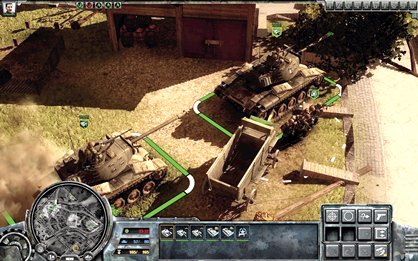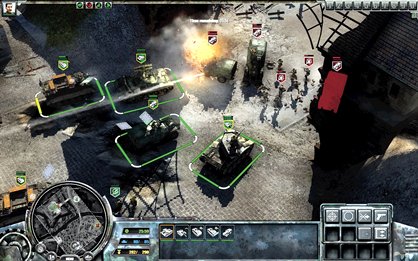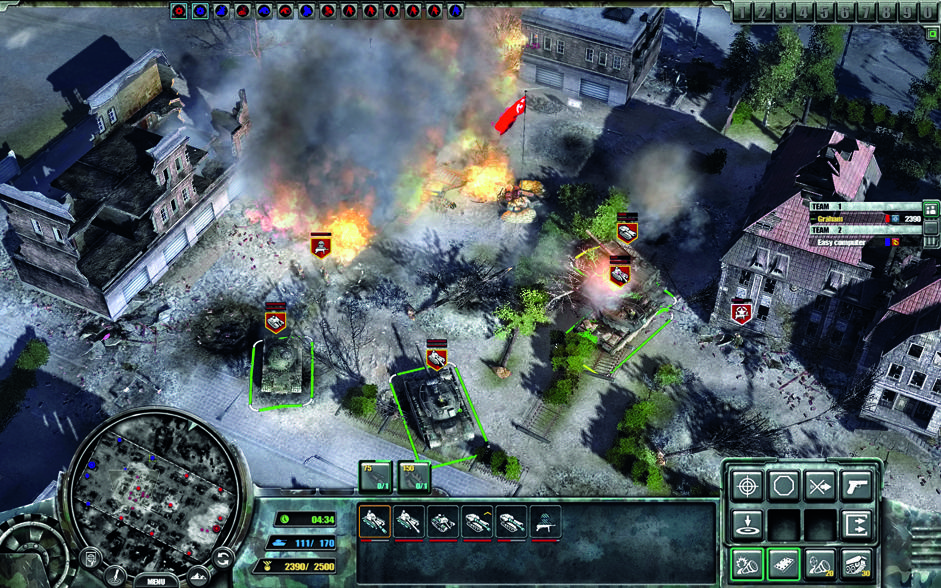Why you can trust GamesRadar+
The conditional objective is that your hero units survive. Heroes are stronger than normal soldiers, but they’re still men on a battlefield of metal death machines, and vulnerable even when inside a vehicle. Their death means insta-fail and a return to the last autosave, thus, for all their strength, you’re usually better off leaving them a safe distance from any battle. Like at home. It’s a self-defeating game mechanic.

It’s only worth using hero units for urban warfare. An early rescue mission has you fighting through the streets of Berlin with only a small group of soldiers. Where fighting with tanks requires little more than left-click select and right-click attack, this proves one of the few moments requiring thought and actual tactics.
Your tiny fighty men benefit from greater micromanagement. You can tell them where to duck and cover, rather than hoping they’ll do it themselves. You can position squads inside buildings, providing protection for snipers and allowing for ambushes. You can direct them to lob grenades of smoke, fire or explosion. It’s worth the effort to keep your men alive, as they’ll gain experience that they can then carry over to the next mission.
Vehicles, meanwhile, require only the activation of special abilities. Most crucially, APCs can be equipped to repair nearby vehicles, but others can swap machineguns for flamethrowers or anti-aircraft guns. Other than making sure one of your tanks is a healer, the only time you might want to issue anything more than the simplest of commands to your vehicles is when navigating around cover. Your metallic brood will happily go wherever you point them, to the detriment of anything in their way. This is helpful and entertaining when you send them barrelling off through some trees, and considerably less so when they drive directly through the only cover your soldiers had to hide behind.

The detail is plentiful: location damage on vehicles, guard towers to be manned, defensive mines to be placed and barriers to be built. But it’s not new, or interesting, and it grows repetitive. Harder difficulty levels require you pay more attention to your troops’ ammo levels and utilise your squads’ ability to set up mechanic and first-aid tents, but most fights are still won simply by having your tanks swarm everything as a pack. It’s a highly polished, occasionally satisfying, wholly unremarkable game set not in WWII, but in an imagined reality where it had a sequel. Not World War III, but WWII 2.
Mar 10, 2009
More info
| Genre | Strategy |
| Description | PC RTS series Codename Panzers is rolling back into action in Cold War, a brand new game set in the early 1950s and during the Cold War - no, really. |
| Platform | "PC" |
| US censor rating | "Teen" |
| UK censor rating | "12+" |
| Alternative names | "Codename Panzers: Cold War" |
| Release date | 1 January 1970 (US), 1 January 1970 (UK) |



